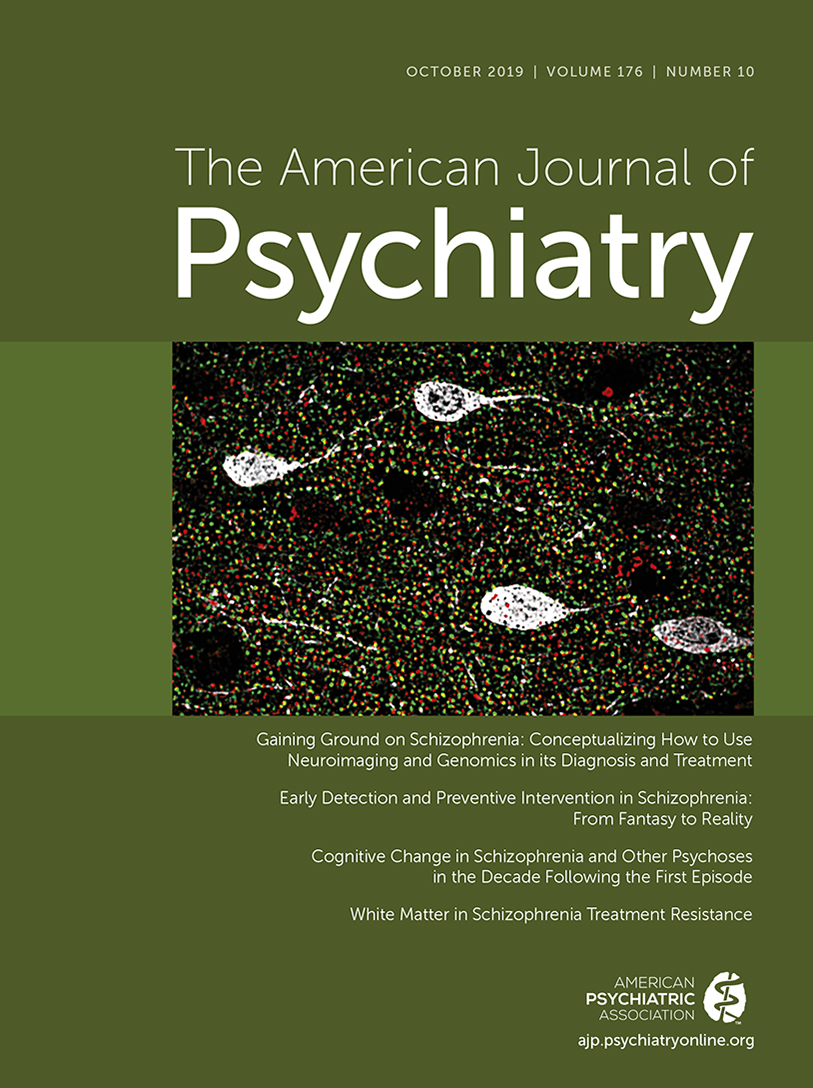White Matter in Schizophrenia Treatment Resistance
Abstract
Objective:
Failure of antipsychotic medications to resolve symptoms in patients with schizophrenia creates a clinical challenge that is known as treatment resistance. The causes of treatment resistance are unknown, but it is associated with earlier age at onset and more severe cognitive deficits. The authors tested the hypothesis that white matter deficits that are involved in both neurodevelopment and severity of cognitive deficits in schizophrenia are associated with a higher risk of treatment resistance.
Methods:
The study sample (N=122; mean age, 38.2 years) included schizophrenia patients at treatment initiation (N=45), patients whose symptoms were treatment responsive (N=40), and patients whose symptoms were treatment resistant (N=37), as well as healthy control subjects (N=78; mean age, 39.2 years). White matter regional vulnerability index (RVI) was tested as a predictor of treatment resistance and cognitive deficits. Higher RVI is indicative of better agreement between diffusion tensor imaging fractional anisotropy across the brain in an individual and the pattern identified by the largest-to-date meta-analysis of white matter deficits in schizophrenia.
Results:
Patients with treatment-resistant symptoms showed the highest white matter RVI (mean=0.38 [SD=0.2]), which was significantly higher than the RVI among patients with treatment-responsive symptoms (mean=0.30 [SD=0.02]). At the onset of treatment, schizophrenia patients showed significantly higher RVI than healthy control subjects (mean=0.18 [SD=0.03] and mean=0.13 [SD=0.02], respectively). RVIs were significantly correlated with performance on processing speed and negative symptoms.
Conclusions:
Schizophrenia affects white matter microstructure in specific regional patterns. Susceptibility to white matter regional deficits is associated with an increased likelihood of treatment resistance. Developments to overcome schizophrenia treatment resistance should consider white matter as an important target.



